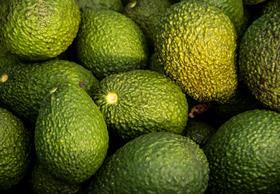
Georgian hazelnut producer Geonuts has established the first commercial avocado farm in the country on 6ha in Lanchkhuti municipality, Guria.
The company said the first crop is due to be harvested as early as next year, with the farm entering full production over the next 4-5 years.
Geonuts purchased avocado seedlings from the Italian nursery Vivai Zanzi with the assistance of Green Solutions, the official representative of Zanzi in Georgia. Seedlings and avocado varieties were selected taking into account the climatic conditions of Georgia.
“Avocados are the fastest growing category in the global fruit and vegetable trade, outstripping even the best-sellers of recent years such as blueberries, cherries, mangoes or durian in terms of export growth, with global trade growing by an average of US$780m a year,” said Andriy Yarmak, economist at the Investment Centre of the Food and Agriculture Organization (FAO) of the United Nations.
Zviad Bobokashvili, head of the Fruit Crops Research Department of the Research Centre of the Ministry of Environmental Protection and Agriculture, said previous attempts had been made to grow avocados in Georgia’s Adjara and Abkhazia regions in the 1940s and 1950s.
But they had been unsuccessful as the varieties were not frost-resistant and were therefore unable to withstand the winters, which were much harsher in the mid-20th century than today.
“Today the climate of Georgia is much milder, so you can consider growing avocados, although an appropriate selection of varieties requires research and cultivation in small experimental plots,” he said.
“Commercial avocados can withstand up to -60C, but there are also varieties that can withstand as much as -110C, such as Mexican avocados. Therefore, it is possible that such varieties could be grown in Georgia.”
Bobokashvili explained that provided farms had frost protection, this meant varieties such as Hass and Fuerte could also be produced, notably in areas like the Black Sea coast where the country’s citrus production is located.
While global warming had created new opportunities to grow crops that it was not previously possible to cultivate, it also had negative implications as it increased the number of extreme climatic events, such as drought, Bobokashvili noted.
This article was originally published by EastFruit.



